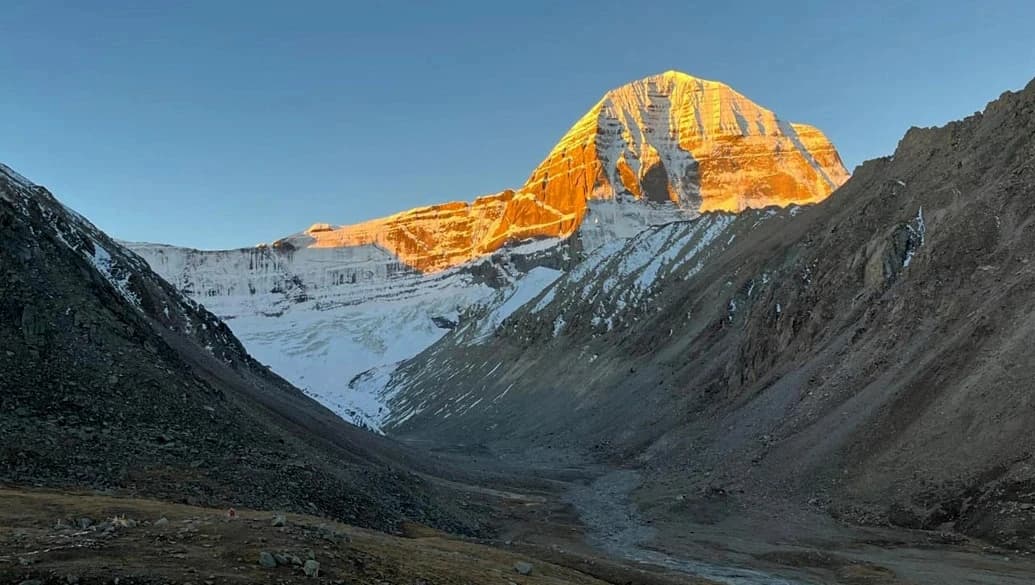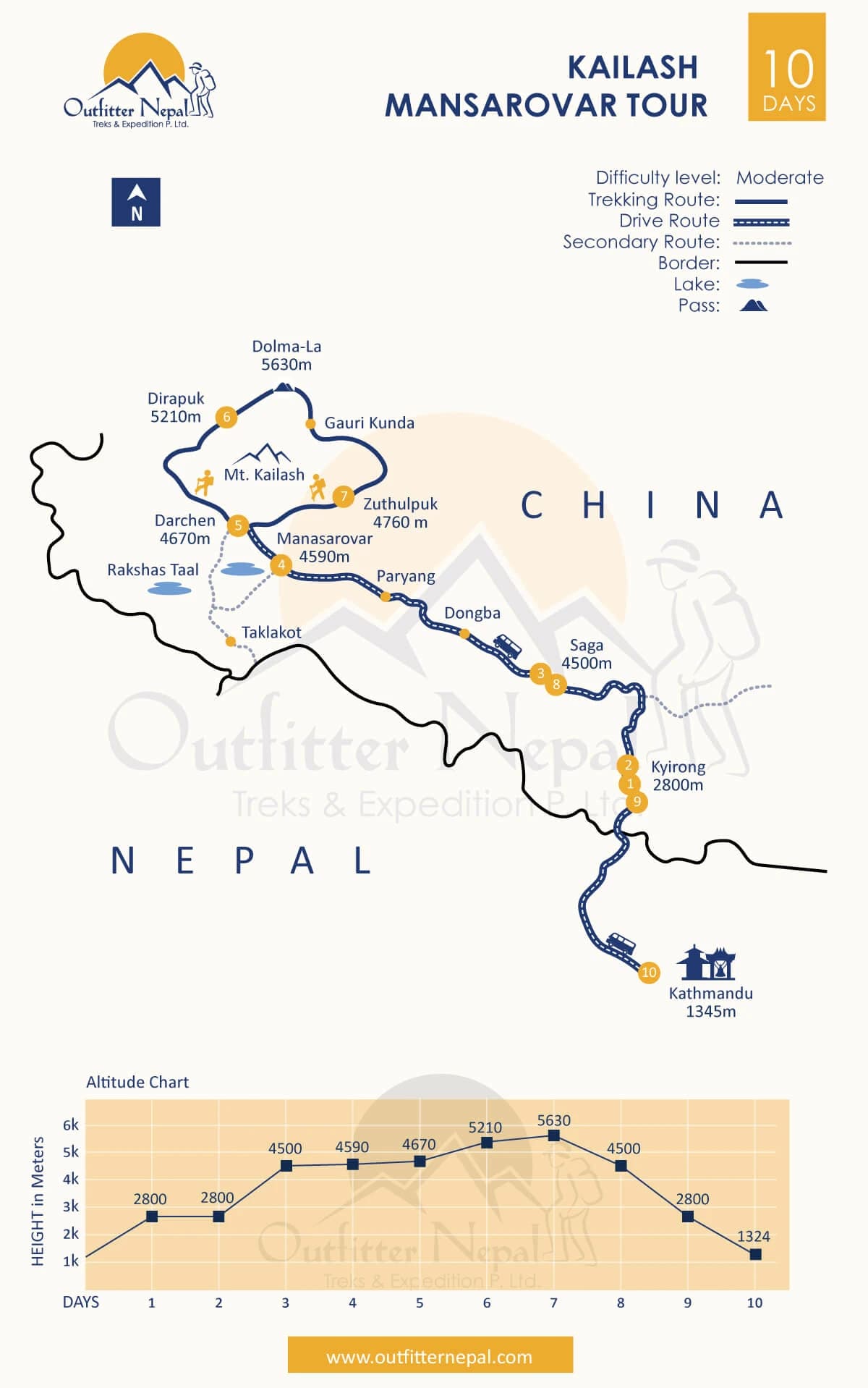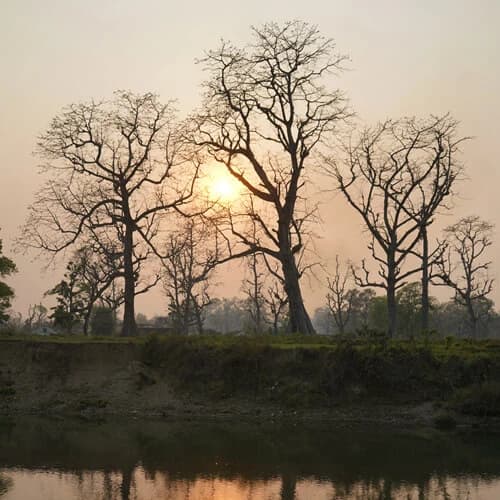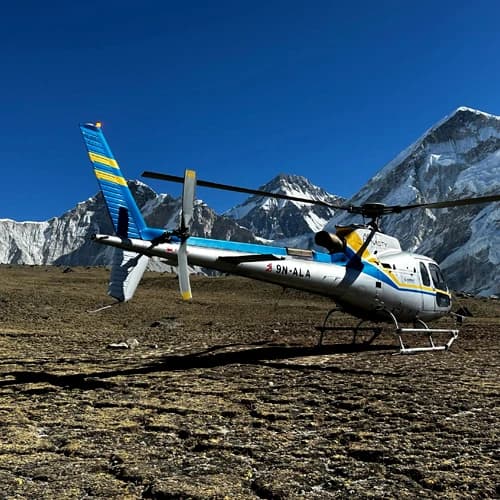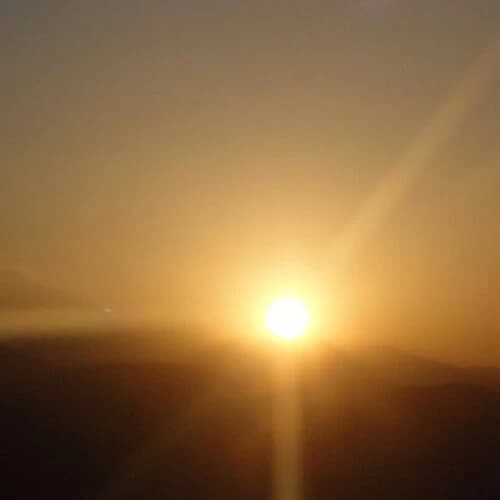The Kailash Mansarovar Tour is one of the most popular tours in Tibet. The Hindus believe that to plunge into the freezing cold waters of Lake Manasarovar and walk around its perimeter is to erase a whole lifetime of sins. Tibetans believe that they negate their wrongdoings purely by walking around the lake and Mt. Kailash. The people have some mysterious beliefs (theories) about the Mansarovar Lake. Tibetans people call it the holiest in the land, believed to be where the gods washed Buddha. It is also assumed to be the place where Queen Maya was brought before giving birth to Lord Buddha.
The trip to Mount Kailash and nearby Lake Mansarovar is a life-changing and meaningful event. It is the apex of spiritual endeavor for devoted pilgrims and provides a haven for reflection, prayer, and self-discovery. Adventure seekers are drawn to this holy terrain by its untamed beauty, seclusion, and remoteness since it provides a special fusion of mental and physical challenges. Take in the breathtaking scenery, the crystal-clear waters of Lake Mansarovar, and the otherworldly atmosphere that envelops Mount Kailash.
The Mount Kailash Mansarovar Tour 2025, 2026 starts and ends in Kathmandu (the capital city of Nepal). The tour begins with a long drive from Kathmandu (Nepal) to Gyirong/Kerung (Tibet), passing by the Nepal - Tibet Friendship Border at Rashuwagadhi. You’ll be staying 2 nights in the town of Gyirong to adapt to the high altitude. After 2 nights, we set out on the Tibetan road trip in a private vehicle with a Tibetan tour guide and a personal driver. We reach Lake Mansoravar in 2 days after staying a night at Saga. Once we explore and worship at the lake, we head towards Darchen, where we begin a 3-day Kailash Kora Trek. After circuiting Mt. Kailash, we head back to Saga, then to Gyirong, and finally to Kathmandu, where the trip concludes.
Outfitter Nepal offers Mt. Kailash & Mansarovar Lake Tour on both group and private departures, and the Kailash Manasarovar tour cost is depends on the service and number of people of the group size. Our carefully planned Kailash Mansarovar Tour transports you on an incredible journey through the untamed and isolated regions of western Tibet. Get ready for strenuous overland travel, exhilarating hikes, and serene excursions that help you bond closely with the region's untamed nature and spiritual energy.
Join us on this lifetime opportunity to dip in the holy waters of Mansarovar and circuit the sacred Mt. Kailash on foot. Find your desired date on the list of departure dates and join our group departures. If you are in a group of 5 or more, we can also organize a private trip for you. Read along for detailed information about the tour and contact us for more.
Best Features of Mt. Kailash and Mansarovar Lake Tour
- Visiting the holy Mt. Kailash and the sacred Mansarovar Lake
- Enjoying the view of Mt. Kailash from Lake Mansarovar
- Spending the night by the side of Mansarovar Lake
- Taking a dip and worshiping at the holy Mansarovar Lake
- Circuiting the Kailash Kora on foot
- Crossing Drolma La Pass at 5630 meters
- Observing the mesmerizing sight of Gauri Kunda from the top of Drolma La Pass
- Capturing the enchanting views of Mt. Kailash's north face from Dirapuk Monastery
- Visiting beautiful small Tibetan settlements
- Learning about Tibetan culture and lifestyle
Major Attractions of the Kailash Mansarovar Tour
Mount Kailash
Nestled amidst Tibet's captivating scenery, Mount Kailash is a towering landmark that draws pilgrims and adventure seekers from all over the world. This magnificent peak soars to great heights of 6714 meters. It goes by several names, including Kailash Parvat, Tise, and Kang Rinpoche (Jewel of the Snows).
Signifying the center of the physical and metaphysical universe, it has great spiritual significance for Hindus, Buddhists, Janis, and Bonpos. For Hindus, Mount Kailash is a symbol of Lord Shiva's revered home, the demolisher and transformer of the Hindu triad. It is thought that a trip to this holy peak offers total emancipation and purifies the spirit. Buddhists view Mount Kailash as a physical embodiment of the cosmic mandala, embellished with the presence of Bodhisattvas and Dyani Buddhas. This holy mountain serves as a portal to higher states of awareness and a beacon of enlightenment for devotees of both religions.
Kailash Kora
The Kailash Kora or Kailash Parikrama (Mt. Kailash Circuit) is a holy walk that circumnavigates Mt. Kailash. The hiking route is 52 km long and takes 3 days to complete. The hike is difficult since it entails walking at high altitudes, and crosses the 5,630-meter-high Drolma La Pass. The kora begins in the small village of Darchen and goes along Sarshung Village, Lachu Valley, Dirapuk, Drolma La Pass, Zuthulpuk, and concludes at Darchen. You will get to view the gorgeous Gauri Kunda from the summit of Drolma La Pass.
Mansarovar Lake
Mansarovar Lake, located in the southwest region of Tibet, is one of the highest freshwater lakes in Asia, elevated at an altitude of 4590 meters above sea level. This somewhat circular-shaped lake has a perimeter of 88 km. The lake is well-known among nature lovers for its gorgeous surroundings and crystal-clear waters.
Just like Mt. Kailash, Lake Mansarovar also has religious significance in Hinduism, Buddhism, Jainism and Bon religion. According to legend, this is the place where Lord Shiva tamed the sacred Ganges river and sent it to feed the verdant valleys beneath the Himalayas. Buddhism regards Mount Kailash as the father principle and Lake Mansarovar as the mother principle. Queen Maya is said to have taken a bath in Manasarovar before giving birth to Buddha. Similarly, Lake Manasarovar is linked to the first Tirthankara, Rishabha, in Jainism. A ritual bath in the lake is thought to wash away all the sins and purify the soul.
Chiu Monastery
Chiu Monastery is a historic monastery situated at the shore of Lake Mansarovar, which is perched atop the rocky red-colored Sangtok Pelri Mountain and appears to have been cut directly out of the rock. One can enjoy a breathtaking view of Gurla Mandhata Peak (7,694m) and the Manasarovar Lake from the monastery. Mount Kailash is also visible from here on a clear day. Despite its small size, Chiu monastery's architecture is similar to Potala Palace.
Rakshas Tal
Rakshas Tal is a saltwater lake located just west of Mansarovar Lake and south of Mt. Kailash. Rakshastal and Lake Manasarovar are connected by a little river called Ganga Chhu, which is thought to have been formed by rishis to bring in pure water to the Rakshastal from Manasarovar. Rakshastal consists of four islands: Dose, Dola, Lachato, and Dosharba. The locals utilize the islands as their yaks' winter pastures.
In Sanskrit, the lake's name literally translates to "lake of the demon". It is also referred to as Ravan Tal because Ravan, the demon-like King of Lanka, is said to have performed extreme penance there. The lake is referred to as Lhanag Tso or Lagngar Cho in Tibetan, which translates to "the dark lake of poison".
Darchen
At the base of Mount Kailash sits the little settlement of Darchen. It is sometimes referred to as Mount Kailash Base Camp. It serves both the beginning and finish of the Mount Kailash Kora trek and is a major gathering place for travelers. The town has many lodges and guest houses serving food and accommodation to pilgrims and travelers visiting Mt. Kailash.
Dirapuk Monastery
Dirapuk Monastery is located close to Mount Kailash and offers stunning views of the peak's northern flank. Every year, hundreds of pilgrims who traverse the sacred trail around Kailash, stop at the monastery along the way. It is one of the best locations to photograph the north face of Mt. Kailash. The view is especially amazing during sunrise in the morning.
The Gotsangpa yogin's retreat cave serves as the foundation for the monastery. He found the route around Mount Kailash, guided by Daikinin, who appeared to him in the form of a yak. This is how the monastery's name originated. Dira translates to "female yak horn" and Puk to "cave" in Tibetan.
Drolma La Pass
Drolma La Pass is the highest point on Mount Kailash Kora at 5,630 meters above sea level. The rise is hard and steep, and breathing is hard at this level due to the thin air. Despite its difficulty, the pass is regarded as one of the highlights of the hike because of the breathtaking views from the top. One can see Gauri Kunda from the pass, which bears the goddess Parvati's name and is thought to be the location of her bath before being married to Lord Shiva.
